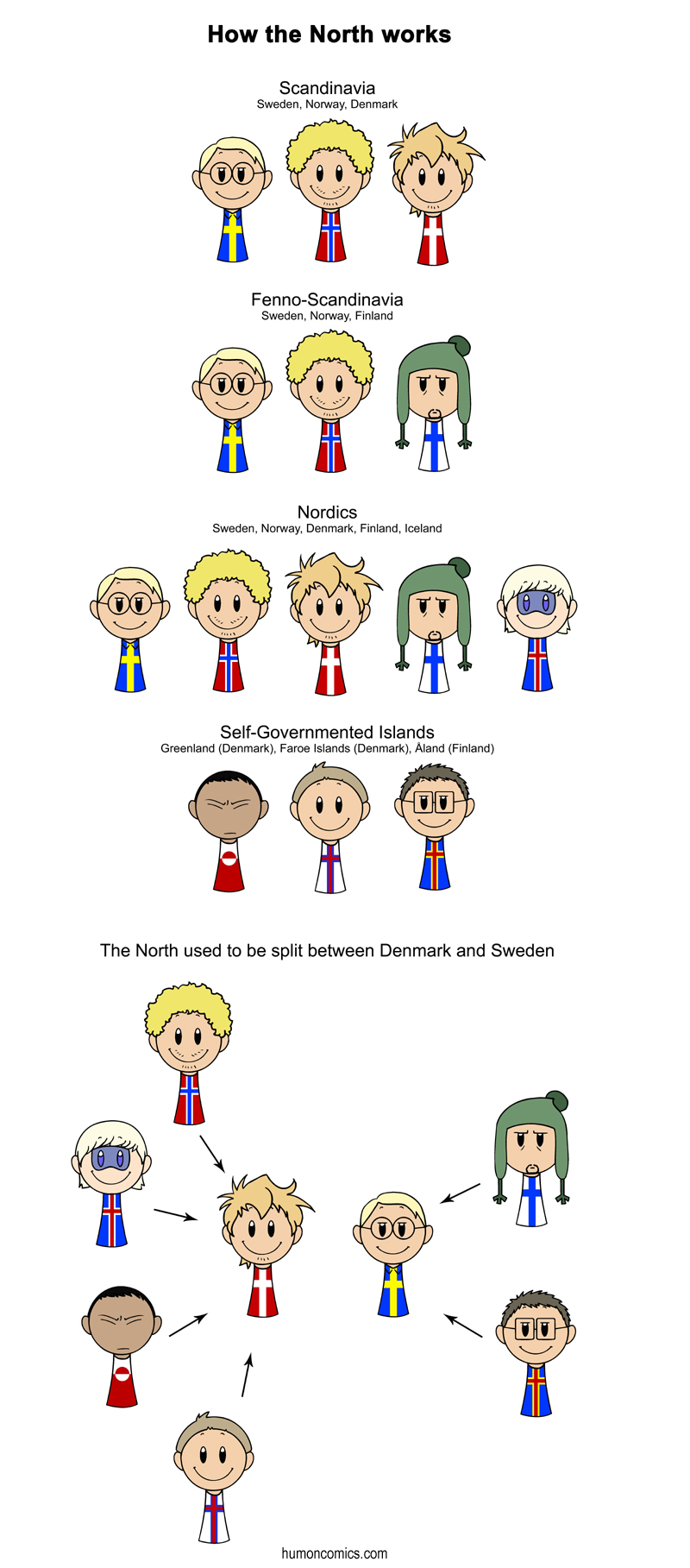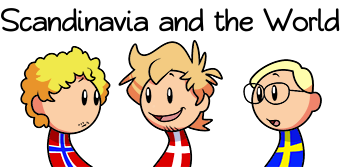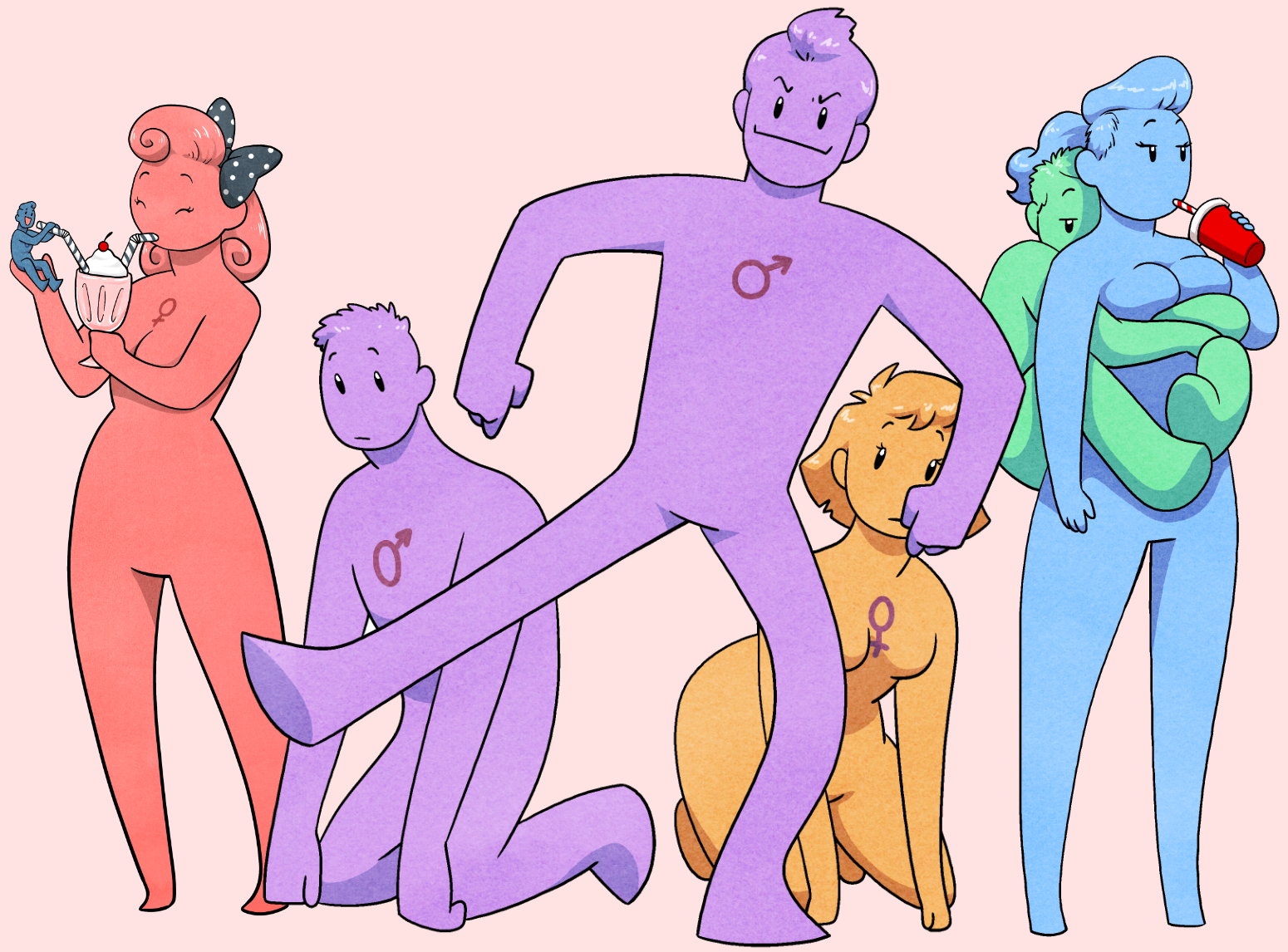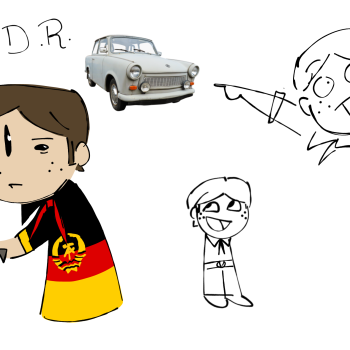
How the North works
I found this lying unfinished around on my computer, and because I’ve got no comic today you’ll have to do with this.
Being the Dane I am, I of course forgot the Sami People (the Nordic "Indians").
EDIT: Yes, Sweden got Norway later on, but that is not what the bottom picture is about. For many years the Nordics were separated in West-North and East-North. When Sweden got Norway that messed up the separation of West and East and marked Denmark’s decline from power.
Aland Iceland Finland Greenland Norway Faroe Islands Denmark Sweden
17th August 2010
CaliforniaLove



10 years ago #9444916
8
0
I live in California, though I am originally from Sweden. and I tried to use this to inform a teacher that while Finland is part of Fenno-Scandinavia, it is not part of Scandinavia. She told me I was wrong and gave me detention. Go figure.
10 years ago #9398676
5
2
@Kikki94
So you're not an expert, then who are you do decide what's in "scandinavia" and what isn't? @finnhare just wrote several reasons why Finland very much IS a part of it. Scandinavia isn't a real country, so there isn't really any real definition of what is and what is not Scandinavia. Just several different definitions.
Hva er poenget med å hele tiden kommentere hva som er eller ikke er deler av skandinavia? Du er ikke den eneste som gjør dette. I tillegg er det helt unødvendig, siden "skandinavia" ikke har noen betydning i dag. "Norden" derimot, er mye viktigere med tanke på samarbeid over landegrensene som skiller disse områdene som har så lik kultur og like verdier.
So you're not an expert, then who are you do decide what's in "scandinavia" and what isn't? @finnhare just wrote several reasons why Finland very much IS a part of it. Scandinavia isn't a real country, so there isn't really any real definition of what is and what is not Scandinavia. Just several different definitions.
Hva er poenget med å hele tiden kommentere hva som er eller ikke er deler av skandinavia? Du er ikke den eneste som gjør dette. I tillegg er det helt unødvendig, siden "skandinavia" ikke har noen betydning i dag. "Norden" derimot, er mye viktigere med tanke på samarbeid over landegrensene som skiller disse områdene som har så lik kultur og like verdier.
10 years ago #9440853
2
0
I would add that before this, all of us were united in the Kalmar union. And before that again, Iceland and the Faeroe islands were part of Norway, not Denmark
7 years ago #9817649
1
0
Fun fanct for ppl who wonder why Finlad is not part of Scandinavia:
Swedish, Norwegian and Danish and Icelandic are all Scandic languages. They belong to North Germanic languages (part of Indo-European languages, in Family of three Germanic languages).
Germans (not from Germany, Germany came later) lived in South Scandinavia, and around 500 B.C.E the languages started to turn in their own directions.
850 B.C.E the climate started to change colder and part of the people moved south to the area nowadays know as Germany and Holland, and that is why the languages have a lot of similarities.
The language is the reason why it's called Scandinavia
Finnish is Uralic language. Uralic languages include Hungarian, Finnish, and Estonian.
Finland is not part of Scandinavia since they does not speak Scandinavian language
Swedish, Norwegian and Danish and Icelandic are all Scandic languages. They belong to North Germanic languages (part of Indo-European languages, in Family of three Germanic languages).
Germans (not from Germany, Germany came later) lived in South Scandinavia, and around 500 B.C.E the languages started to turn in their own directions.
850 B.C.E the climate started to change colder and part of the people moved south to the area nowadays know as Germany and Holland, and that is why the languages have a lot of similarities.
The language is the reason why it's called Scandinavia
Finnish is Uralic language. Uralic languages include Hungarian, Finnish, and Estonian.
Finland is not part of Scandinavia since they does not speak Scandinavian language
8 years ago #9766096
1
0
Sweden's smug ass face makes me wanna crush his glasses and stuff it down his throat
Add comment: Please Sign in or create an accout to comment.



 Support the comic on
Support the comic on 

































